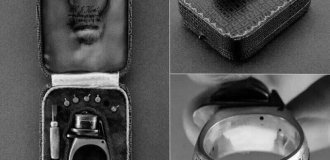Each country has its own signs and customs associated with the arrival of winter holidays. In many European countries, Christmas markets open at the beginning of December, where you can buy everything you need for the holiday. And when happy and tired customers enter a cafe, they are certainly offered a cup of hot drink, which is an indispensable attribute of New Year's celebrations. Of course we are talking about mulled wine.

Mulled wine (German Glühwein from glühender Wein - red-hot wine) is a hot alcoholic drink based on wine.
Traditionally used in Austria, Germany, Great Britain and Scandinavian countries at Christmas markets and outdoor celebrations.



The Russian word “mulled wine” could have been formed by reducing the German phrase “glühend(er) Wein”, and the German glühend turned into glint-. It is also possible that this word came into the Russian language not directly from German, but through Polish mediation (glintwajn is also noted in Polish), and a similar transformation occurred first in the Polish language.


Already in the 17th century, in most European countries they began to heat diluted alcohol by adding fruits and spices to it. These unusual combinations resulted in aromatic mulled wine.
Some historical sources claim that this drink may be older than Christmas itself.


The first recipes for a drink similar to mulled wine were known in Ancient Rome. Then the wine was mixed with spices, but not heated.
Real hot wine appeared during the Middle Ages in the countries of Northern Europe, Britain and Scandinavia. The drink was made from Bordeaux or claret and flavored with galangal herb.

Mulled wine warms you up very well and helps with colds; it is most beneficial to prepare it in winter and at any cold time.
For mulled wine, as a rule, young red light dry wine with an alcohol content of 8.5 to 12.5% is used.
You should not prepare mulled wine from aged, much less old, expensive wines.


Good fit:
* Dry red table wines: Kindzmarauli, Saperavi, Cabernet, Merlot.
* Red semi-dry and semi-sweet: Khvanchkara, Kagor.
* Chilean or Argentine wines

When preparing mulled wine, the main thing is to remember the truth - mulled wine should under no circumstances boil, otherwise the impression of the drink will be completely ruined.
The finished temperature should be around 70 degrees.


Here is the recipe for classic mulled wine:
A bottle (0.75) of table red wine, 6-7 cloves, nutmeg to taste, 1/3 glass of water, a tablespoon of sugar.

Cloves and ground nutmeg are poured into a Turk, 1/3 cup of water is added, brought to a boil and simmered over low heat for one minute. After this, the broth should sit for 10 minutes. The wine is poured into a saucepan and put on fire. The contents of the Turka are poured into barely warmed wine and a tablespoon of sugar is added. The main thing is not to overcook the mulled wine on the fire; it’s better - to be on the safe side - to simply remove it from the stove when it’s hot enough. After this, the drink must be either immediately poured into cups or poured into a ceramic teapot. It is important not to forget that mulled wine does not tolerate refrigeration, since once heated, the wine forever loses its bouquet and taste.


Spices for mulled wine should not be ground. Ground spices will dissolve in the wine, causing a cloudiness that cannot be removed and the mulled wine will be spoiled.

Mulled wine can be seasoned with:
Cinnamon. A classic element of mulled wine, it is better to use cinnamon sticks.

With cloves. The eternal companion of good mulled wine. You can take a small thin-skinned lemon and there you go.
stick black clove buds into it. And let it marinate for about an hour.
Then it is put in the same form into the prepared mixture of wine with water and sugar, and it gives off all its aroma.

Anise and star anise. They will give your mulled wine an oriental note and a delicate licorice aroma. It is best to choose star anise: it looks beautiful in the finished drink.

Ginger. It has a warming effect, so it is absolutely appropriate in winter.

Black pepper. Don't be afraid that it will add spiciness to your mulled wine. When cooked in wine, the aroma becomes more intense and the bitterness goes away.

Bay leaf. The bay leaf is placed shortly before the end of preparing the drink, otherwise the mulled wine will look like soup.

Cardamom. When using cardamom, citrus fruits can no longer be added, since cardamom itself has a lemon-eucalyptus flavor.

Coriander. Add a few peas and the classic mulled wine will sparkle in a new way.

Saffron. A little saffron on the tip of a knife will not only enhance the taste of mulled wine, but also improve its color.

Nutmeg. You only need a little bit of this spice. It brings out the flavor of other spices.

Barberry. It will add a pleasant sourness.

Fruits: apples, citrus fruits, apricots, peaches, plums, etc.

Dried fruits: raisins, dried apricots, prunes, etc. Just be sure not to overdo it with the quantity, otherwise the mulled wine will turn into dried fruit compote.

Nuts: almonds, hazelnuts (many criticize the presence of nuts in mulled wine, although almonds, for example, give it a pleasant bitterness)

Berries. Cranberries, blueberries, black currants, the main thing to remember is that berries are not the basis of the drink, but only an additional element.

Honey and sugar. 4-5 tablespoons of sugar per 0.75-1 liter of wine will be just right. It is necessary to remember that in cold wine the sugar is felt less than in hot wine, so it is better not to add sugar at first. They often prefer to replace sugar with honey, then the taste of mulled wine becomes even more specific, but with honey it is more difficult to calculate the proportions, although such mulled wine warms better and is more healthy.

Juices: apple, lemon, orange, cherry (this juice gives mulled wine a soft taste), etc.

Strong alcoholic drinks. The drinks must be good. It can be: port wine, cognac, rum, tequila and vodka, various liqueurs and tinctures.
The only thing is that the concentration of alcohol should not be very high, otherwise it will overwhelm the aroma of real mulled wine.

Although mulled wine “loves” spices and seasonings, you shouldn’t add everything to it!!! Choose those that suit your taste.


You should drink mulled wine in reasonable quantities, no more than two glasses per evening. Firstly, hot alcohol can easily get you drunk. And secondly, due to the active substances found in spices, the stomach may hurt.

Traditionally, mulled wine is drunk either separately from food or with desserts and pastries: cookies, apple, pear or plum pie or strudel, most importantly, not too sweet, fruit, cheese
.
























